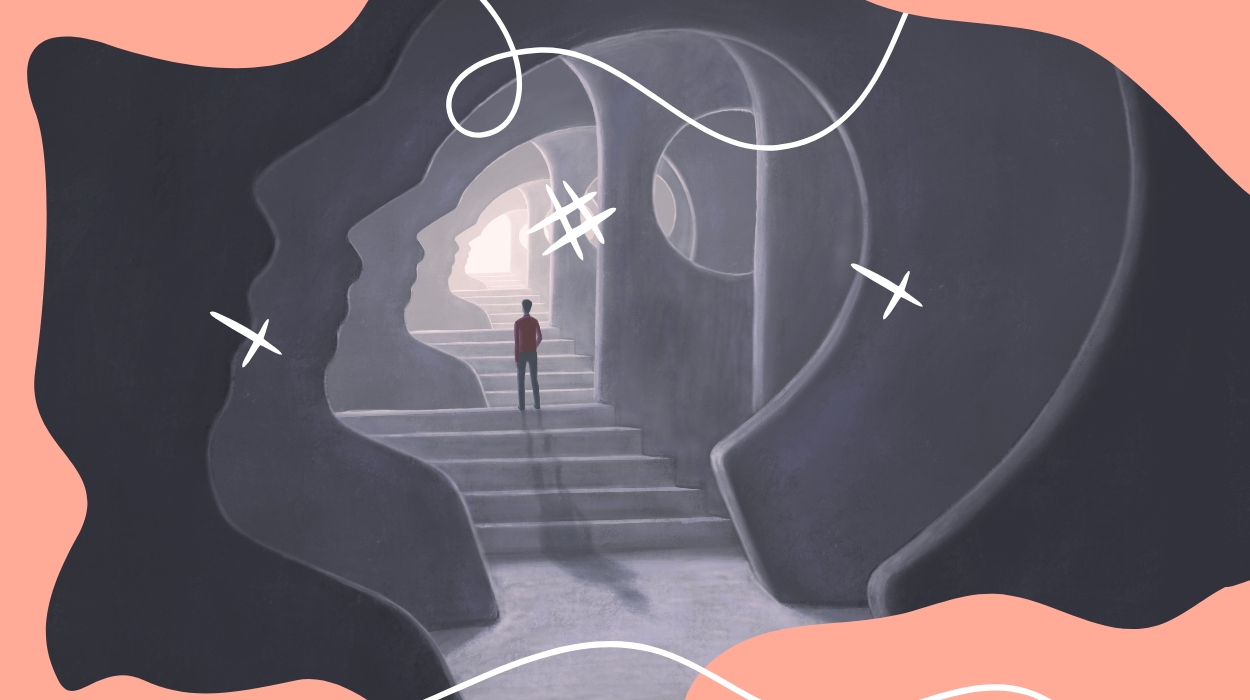 Expert's opinion
Expert's opinion
Expert's opinion
The article is a subjective view on this topic written by writers specializing in medical writing.
It may reflect on a personal journey surrounding struggles with an illness or medical condition, involve product comparisons, diet considerations, or other health-related opinions.
Although the view is entirely that of the writer, it is based on academic experiences and scientific research they have conducted; it is fact-checked by a team of degreed medical experts, and validated by sources attached to the article.
The numbers in parenthesis (1,2,3) will take you to clickable links to related scientific papers.
What Is Extinction In Psychology? – Causes & Treatment

Conditioned behaviors are behaviors that are learned through rewards and punishments implemented over a long period of time. Suppose a parent brings their young child to the store and the child sees a toy they want the parent to buy for them, and the parent tells them no. The child throws a tantrum, and the parent eventually caves and buys them the toy to calm them down.
The next time they go to another store with their child, and the child sees something they want, they may immediately throw a tantrum because they have learned that they can get their way with that kind of behavior.
Extinction is the stopping of a conditioned behavior like the example above. For instance, if the parent stops buying their child a toy no matter how much of a fit they throw, they will eventually learn that throwing a tantrum will not get them what they want and stop that behavior. Psychologists would call the ending of that behavior “extinction”.
What Is Extinction In Psychology?
According to much research[1] done about memory, it is not easy to get rid of one once a memory is formed. However, it is not impossible.
Memories and learned behavior can weaken and eventually stop over time. In psychology, extinction[2] is when conditioned behavior associated with another event eventually stops. Extinction happens when the stimulus is no longer provided.
How Extinction Is Defined In Psychology?
The term extinction in psychology was first used by Ivan Pavlov[3] when he was researching classical and operant conditioning. Many have learned about Pavlov’s study of conditional learning with dogs.
He observed the dogs salivate each time food is served, so he would ring a bell before food is presented, and eventually, the dogs would start salivating at just hearing the bell. However, further to that – when the bell kept ringing but no food was presented over a long period of time, the dogs eventually stopped salivating when they heard the bell.
Extinction can be used as a psychotherapeutic tool to overcome pathological fears. Psychotherapists will often work together with the client to implement a new, adaptive behavior to replace the maladaptive behavior.
For example, suppose a person was given an electric shock each time a loud noise was played. In that case, eventually, their stress levels will go up when they hear the loud noise because they anticipate the electric shock afterward.
However, suppose after learning to associate the loud noise with an electric shock, the person is given a dessert after playing the loud noise instead of being given an electric shock. In that case, eventually, the response will change towards hearing the loud noise.
Causes Of Extinction And When It Occurs
There are two identified types of conditioning – classical conditioning, also known as Pavlovian conditioning[4], and operant conditioning. Both types of conditioning can occur intentionally or naturally, and can be subject to extinction.
Classical Conditioning
When a stimulus is paired with an involuntary behavior, and then a second stimulus is introduced to elicit the same involuntary behavior, it is called classical conditioning[5]. In the example given previously, the first stimulus is the food which prompts the dogs to salivate (this is an involuntary behavior).
When Pavlov introduced the bell, the bell’s ring became the second stimulus which, after a while, would make the dogs salivate just from hearing it.
Extinction occurs when the behavior no longer occurs after the stimulus is carried out. In the same example, when Pavlov stopped providing food after ringing the bell, over time, the dogs stopped salivating when they would hear the bell.
Operant Conditioning
Another psychologist, B.F. Skinner[6], experimented on rodents. He put a rodent in a box with a cage on one side and a bar that the rodent can push to receive food on the other side.
Once the rodent discovered this, it would keep pushing the bar repeatedly to receive food continuously. So in this type of conditioning, there is a stimulus (food) paired with a voluntary behavior (pushing the bar).
So if no food comes after the rodent pushes the bar, it will eventually stop that behavior because it is no longer receiving a reward. This type is called operant conditioning[7].
Example Of Extinction
Let us say Kentucky Fried Chicken is Adam’s favorite type of fried chicken. Every time Adam craves fried chicken, he always gets KFC, and it satisfies his cravings. However, Adam develops an allergy to the ingredients KFC uses in their chicken, and after eating it, he gets hives and ends up in the hospital for a week.
Because of that, Adam could develop an aversion to KFC, and possibly all fried chickens, and even the thought of eating it makes him a little itchy. In this example, the behavior of buying KFC every time Adam has a craving for fried chicken stops.
Extinction Bursts
However, at times, the extinction procedure is not as linear as many of the examples we have provided. The process of extinction takes time, and sometimes there may be a temporary increase in the magnitude, duration, or frequency of the learned behavior during the extinction process.
This phenomenon is called an extinction burst[8].
Are Extinct Behaviors Gone Forever?
Extinct behaviors can still come back. If an extinct behavior suddenly comes back, for instance, this is called spontaneous recovery[9]. Several factors can cause the extinct behavior to come back.
Relapsing back to old behaviors can happen when there is spontaneous recovery, resurgence, reinstatement, renewal, and rapid reacquisition. This is because the behavior is still in the subject’s long-term memory, not unlearned.
Factors That May Influence Extinction
Several factors influence a behavior’s resistance to extinction. How strong the conditioned behavior analysis is and how long conditioning has taken place play a crucial part in making the behavior extinct.
The schedule of reinforcement also plays a part in extinction. Behavior that is learned under partial reinforcement is more impervious to extinction than under continuous reinforcement. This occurrence is known as the partial-reinforcement extinction effect[10].
If we take a look at those addicted to gambling, for example, when they gamble, they only win some of the time – a partial-reinforcement schedule. The partial reinforcement schedule makes the addiction to gambling more resistant to extinction because there is still hope that they can win. Since their winnings are so unpredictable, they remain motivated to keep trying and have a harder time giving it up.
Habituation is one factor that can discourage extinction. Habituation[11] is when a person becomes used to a conditioned stimulus. For example, if a person is constantly exposed to the conditioned stimulus, they are more likely to not take notice of it, eventually leading to the behavior’s extinction burst.
However, a person’s personality can affect habituation. A study[12] by a group of researchers found that children who had more anxiety were slower to habituate to a sound played than children with lower anxiety. The findings mean it takes longer for the behavior to become extinct in children who have more anxiety. Extinction and its process are not something we fully understand now, and scientists are still trying to discover the various pieces that cause a behavior to become extinct. Having a deeper understanding of extinction in psychology can help with the modification of problem behaviors. Currently, it is used in behavioral therapy including CBT for anxiety, anger, and depression. However, it has the potential to modify problem behavior among individuals who do not have developmental disabilities.
+ 12 sources
Health Canal avoids using tertiary references. We have strict sourcing guidelines and rely on peer-reviewed studies, academic researches from medical associations and institutions. To ensure the accuracy of articles in Health Canal, you can read more about the editorial process here
- Costanzi, M., Cianfanelli, B., Alessandro Santirocchi, Stefano Lasaponara, Spataro, P., Rossi-Arnaud, C. and Cestari, V. (2021). Forgetting Unwanted Memories: Active Forgetting and Implications for the Development of Psychological Disorders. [online] 11(4), pp.241–241. doi:https://doi.org/10.3390/jpm11040241.
- Hartley, C.A. and Phelps, E.A. (2012). Extinction Learning. [online] pp.1252–1253. doi:https://doi.org/10.1007/978-1-4419-1428-6_306.
- P Ivan Pavlov (2010). Conditioned reflexes: An investigation of the physiological activity of the cerebral cortex. [online] 17(3). doi:https://doi.org/10.5214/ans.0972-7531.1017309.
- Fanselow, M.S. and Wassum, K.M. (2015). The Origins and Organization of Vertebrate Pavlovian Conditioning. [online] 8(1), pp.a021717–a021717. doi:https://doi.org/10.1101/cshperspect.a021717.
- Rehman, I., Navid Mahabadi, Sanvictores, T. and Rehman, C.I. (2022). Classical Conditioning. [online] Nih.gov. Available at: https://www.ncbi.nlm.nih.gov/books/NBK470326/.
- Morris, E., Smith, N.J. and Altus, D.E. (2005). B. F. Skinner’s contributions to applied behavior analysis. [online] 28(2), pp.99–131. doi:https://doi.org/10.1007/bf03392108.
- Staddon, J. and Cerutti, D.T. (2003). Operant Conditioning. [online] 54(1), pp.115–144. doi:https://doi.org/10.1146/annurev.psych.54.101601.145124.
- Walrath, R. (2011). Extinction Burst. [online] pp.626–627. doi:https://doi.org/10.1007/978-0-387-79061-9_1073.
- Devenport, L.D. (1998). Spontaneous recovery without interference: Why remembering is adaptive. [online] 26(2), pp.172–181. doi:https://doi.org/10.3758/bf03199210.
- Hochman, G. and Ido Erev (2013). The partial-reinforcement extinction effect and the contingent-sampling hypothesis. [online] 20(6), pp.1336–1342. doi:https://doi.org/10.3758/s13423-013-0432-1.
- Benito, K. and Walther, M. (2015). Therapeutic process during exposure: Habituation model. [online] 6, pp.147–157. doi:https://doi.org/10.1016/j.jocrd.2015.01.006.
- Jackson, F., Nelson, B.D., Meyer, A. and Hajcak, G. (2017). Pubertal development and anxiety risk independently relate to startle habituation during fear conditioning in 8-14 year-old females. [online] 59(4), pp.436–448. doi:https://doi.org/10.1002/dev.21506.



